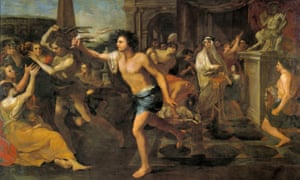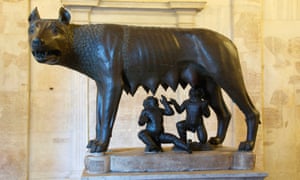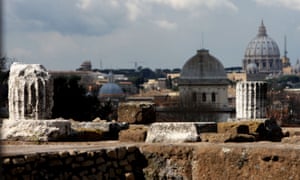Friends, Romans, naked wolf-men … why an ancient festival is still controversial
Krešimir Vuković
The annual Lupercalia festival turned society upside down –
and the location of its starting point is still hotly debated.

Lupercalia by Andrea Camassei is a 17th century portrayal of the riotous festival. Illustration: Andrea Camassei
Scenes from films like Gladiator and series such as HBO’s Rome might lead you to think that the ancient Romans were liberal in their view of nudity. In fact the opposite was true. It was only during exceptional occasions that Romans were freed from their social norms – and the most spectacular occasion was the annual Lupercalia festival.
From the earliest days of Rome, 15 February was reserved for this strange festival. It was so unusual that Cicero disparaged the festival as savage and uncivilised remnants of primitive times. A closer look at the rituals might explain his attitude: men of the nobility stripped down to their underwear in order to strike women with strips of goatskin. Classed as priests, these were not men of the cloth as we would understand it – Roman religion was nothing like modern Christianity or Islam – but young men of military age who showed off their muscles running around the Palatine hill and the Forum, the city centre of ancient Rome.

These young men were known as the Luperci, or wolf-men, because the origin of the festival was tied to the founding of Rome by Romulus and Remus. The ritual started at the Lupercal cave, where a she-wolf was reputed to have suckled the infant twins. Great fertility was believed to be associated with the site.
The association of Lupercal brothers is openly pastoral and uncivilised. Their woodland company was established before civilisation and laws.
Marcus Tullius Cicero
Each year’s Luperci would sacrifice goats and cut the skin of the animals into thin strips, which they used to hit women. Most women deliberately stood in the way of the running priests and were eager to be lashed on various parts of their body. The literary and visual evidence shows everything was fair game, from a gentle touch on the palms to lashes on an exposed backside. But the blows were far from a sadistic beating – it was closer to a playful peck on the cheek. Such interaction between men and women was reserved for Lupercalia and not normally allowed during the rest of the year, so it was no wonder that the festival was extremely popular. But the ritual was serious to the women, who turned up in great numbers because it was believed the whips of the Luperci would bestow fertility. Getting struck would help a woman conceive and give birth, which Romans of that time perceived as extremely important.

The Lupercalia also played an important role in the life (and death) of Julius Caesar. Shakespeare chose the festival as the opening of the second scene of his play Julius Caesar, probably based on an account in Plutarch’s work Lives of Noble Greeks and Romans. The great dictator had prepared his own political spectacle under the guise of the Lupercalia chaos and had made his ally, Mark Antony, the captain of the Luperci. In front of the festive crowds, the wolf-man Antony ran up to Caesar in the Forum and offered him a royal crown – a strict taboo in Rome, where the early kings had been vanquished to form the republic. But by 44BC, Caesar’s powers were unprecedented, comparable to those of a king: an impossible position in the republican Roman system. The Senate was concerned that he might declare himself king; Caesar therefore tried to use the popular festival to make a statement. Before the gathered Romans, Antony thrice offered Caesar a crown – and three times Caesar rejected it. This public rejection of power was meant to alleviate the Senate’s concerns. Unfortunately, it had the opposite effect. The Lupercalia of 44BC happened exactly one month before Caesar’s assassination on the Ides of March.
Despite this evidence of the importance of the Lupercalia festival, the actual sanctuary of the Lupercal is proving difficult to pin down. We know that the wolf-men started their ritual run from the cave, but its location has become a subject of controversy. The Italian archaeologist Andrea Carandini and his associates claimed to have discovered the site back in 2006, to great fanfare in the international press. However, other archaeologists demonstrated that the “discovery” was already known in the late 19th century and it was in fact a nymphaeum, a fountain-like structure.











